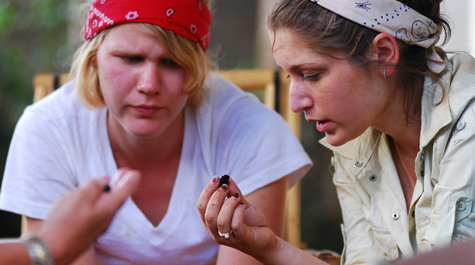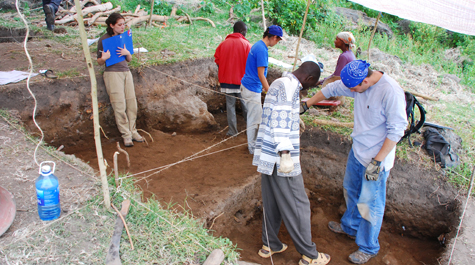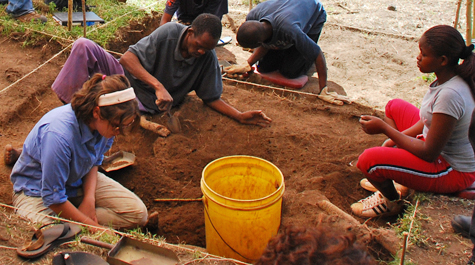Budding archaeologist digs for pumpkin pie
For budding archaeologist Allison Mickel '11, pumpkin pie is extraordinarily fascinating. But it's not the taste or the texture of the pie that intrigues her the most – it’s the merging of three distinct cultures to create something entirely new.
Pumpkin pie, a favorite Thanksgiving dessert, is a combination of ingredients from Native American, European and African cultures – pumpkin, pastry crust and allspice – and represents a cultural mixing referred to as creolization by New World Scholars. The process involves cultures meeting, mixing and reformulating to produce new objects, techniques and ideas.
A recipient of a Monroe Scholarship and International Scholarship through William & Mary’s Roy R. Charles Center, Mickel researched the concept of creolization at the Mtwapa ruins in Mombasa, Kenya, during the summer of 2009. Digging through layers of dirt and archaeological records, she sought to unveil the origins of civilization on the Swahili Coast. Her research entitled, “Looking for Pumpkin Pie's Analogs in the Indian Ocean trading system: Applying the Creolization Model to the Swahili Coast,” is now being showcased in the inaugural issue of the Colonial Academic Alliance (CAA) Undergraduate Research Journal. The journal publishes undergraduate work of the highest caliber for those students enrolled at a CAA school.
“I'm very excited to have my research published in this journal,” said Mickel, who is majoring in anthropology with a minor in linguistics. “Archaeological research is all about surprises. You’re surprised by how much you find and by what you don’t find.”
While scholars have historically attributed the achievements of the Swahili Coast to the colonizing interests of Arab settlers, Mickel argues that ancient origins influenced the area, largely due to the Indian Ocean trade. She specifically cites examples in several areas, including ceramics, metallurgy, religious practice, costume and cosmetics, and architecture.
“These crosscultural similarities allow us to analyze the Swahili Coast and the broader Indian Ocean trading system using creolization theory as a tool,” Mickel said. In her research she notes that the Indian Ocean trade system linked polities as far-reaching as the Roman Empire, Parthia and the Han Empire.
Joel Schwartz, director of the Charles Center and dean of honors and interdisciplinary studies, said it’s a real honor, both for Mickel and for William & Mary, that her paper has been selected for the very first issue of the CAA Journal.
“William & Mary has placed considerable emphasis on providing research opportunities for our students and the quality of Allison’s work is a testimony to the success of this initiative,” he said.
A native of Chicago, Mickel is no stranger to conducting undergraduate research. With the support of a freshman Monroe Scholarship she participated in a six-week archaeological excavation in Western Kenya the summer after her freshman year. After her junior year, she participated in an excavation in Jordan in order to conduct research for her honors thesis, a defense of fiction as archaeological writing.
Mickel, who plans to attend graduate school and pursue her doctoral degree in anthropology, hopes her research will offer a more complete view of the nature of the Swahili culture -- much like our beloved pumpkin pie.

















